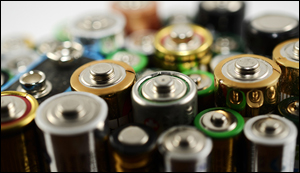Self-healing liquid brings new life to battery alternative
6. 12. 2019 | University of Pennsylvania | home.www.upenn.edu
Rechargeable lithium-ion (Li-ion) batteries are a revolutionary technology, found in everything from cellphones to cars. But the chemistry behind them is facing a looming challenge. Lithium-ion batteries cannot be recharged indefinitely; the materials in these batteries’ electrodes expand and crack with each cycle, gradually decreasing their storage performance until they are useless.
With this challenge in mind, Penn Engineers are looking to design rechargeable battery electrodes that can work efficiently with metal ions other than lithium. Magnesium-ion batteries are a promising alternative, but materials that can reversibly store magnesium have thus far been even more susceptible to the cracking and other problems than their Li-ion cousins.

The researchers have now found a solution by incorporating gallium, a metal that has a melting point a few degrees higher than room temperature, into the anode of a magnesium-ion battery. By melting and solidifying with each charging and discharging cycle, these anodes can “heal” the cracking and subsequent expansion that normally degrade rechargeable battery storage.
Read more at University of Pennsylvania
Image Credit: iStock
-jk-




